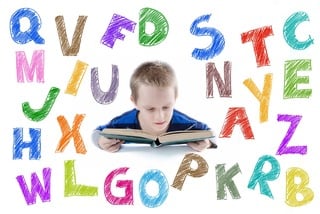Phonological awareness in Early Childhood Education

Phonological awareness is the ability to identify and manipulate the sounds in language. It is an essential skill for reading and writing. Children develop this skill through activities such as rhyming, segmenting words into sounds, and blending sounds to form words.
#Phonological_awareness is crucial for learning to read, as it helps children understand the relationship between spoken and written language. It is a foundational skill that supports the development of phonics, word recognition, and comprehension.
In the first six months of life, babies learn to break up streams of speech to recognize the sounds of familiar words and learn to recognize patterns. By about eight months, an infant may be able to recognize his or her own name and a few other words that are very familiar to them.
Toddlers acquire the ability to recognize and utilize sounds in ways that result in meaningful language. Toddlers frequently begin to pay attention to the letters and sounds in their names.
Preschoolers who are typically developing may be able to recognize rhymes, distinguish between letters with the same and different sounds, and participate in a shared reading of books that emphasize rhyming, alliteration, and sounds.
Children may not start kindergarten being able to read independently, but it’s during the preschool years that kids' #literacy skills first start to emerge. From learning their upper and lowercase letters to beginning to recognize individual letter sounds in words, these skills are the foundation for the reading and academic abilities they’ll have later in life.
A child can use phonological awareness skills to find words that rhyme, find words that start with the same sound, and combine sounds to make words once they know the sounds that each letter makes.
Parents and educators can promote phonological awareness in children through playful and engaging activities.
- Work on rhyming skills: Practice identifying words that sound alike at the end. Play “I Spy” with sounds instead of colors.
- Segment words into syllables: Teach children to break down words into their individual syllables. Make syllables easier to understand by clapping the “beats” the children hear in words.
- Recognize beginning and ending sounds: Help children identify which sound a word starts or ends with.
- Play sound discrimination games: Create games that focus on distinguishing between different sounds.
- Emphasize phonemic awareness: Teach children to notice and differentiate between individual phonemes or sounds in words.
- Engage in word play activities: Encourage children to play with language through activities like tongue twisters or nonsense words.
Check out ChildCareEd's Classroom Tools for Emergent Literacy training course for more ways to support language and literacy development in the classroom.
- 45 Hour Child Growth and Development
- CDA Bridge Bundle: Infant/Toddler without Portfolio Review
- Asthma, Allergy and Anaphylaxis Prevention and Management Training for Early Education Providers
- Basic Health & Safety and Breastfeeding Awareness
- Administering Basic Health and Safety ONLINE
- CDA Bridge Bundle: Preschool without Portfolio Review
- CDA Bridge Bundle: Family Child Care without Portfolio Review
- Language Development in School Age
- Importance of Print Knowledge
- Phonological awareness
- Phonological awareness in Early Childhood Education
- Building Foundations for Literacy: Effective Strategies in Early Childhood Education
- Shining a Light on Autism Awareness Month
- The Vital Importance of Funding Early Childhood Education
- The Importance of Outdoor Play in Early Childhood Education: Nurturing Growth and Learning in Nature
- Social Media's Magic in Early Childhood Education
- Effective Supervision in Early Childhood Education
- The ABCs of ECE: Why Childcare Education Courses Are the Ultimate Parenting Hack
- How to Foster Early Literacy Skills
- How to Foster Early Literacy Skills
- Candy Canes & Certifications: Building Skills in Early Childhood Education
- Making a Difference as a Volunteer
- Beyond the Basics: Specialized Child Care Training Courses That Elevate Your Expertise
- Can Continuing Education in North Dakota Directly Impact Child Outcomes?